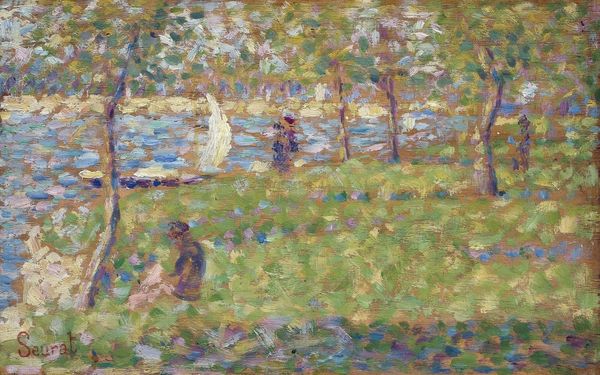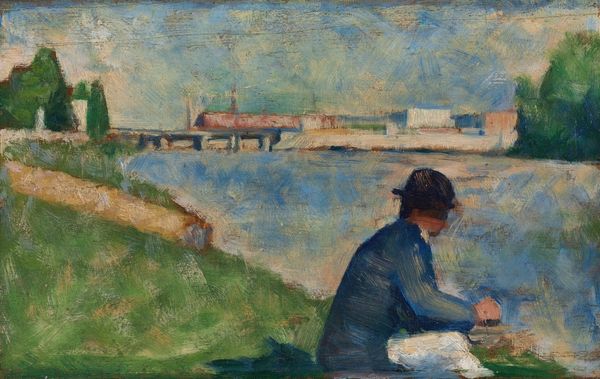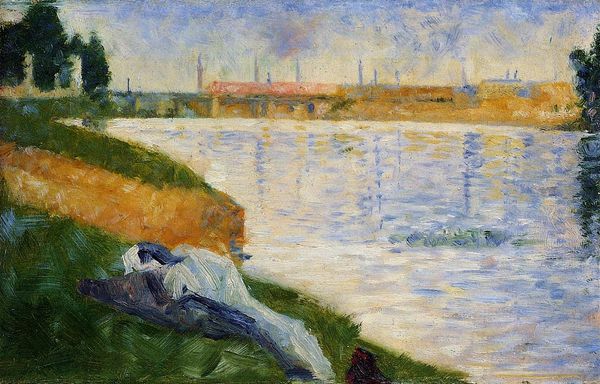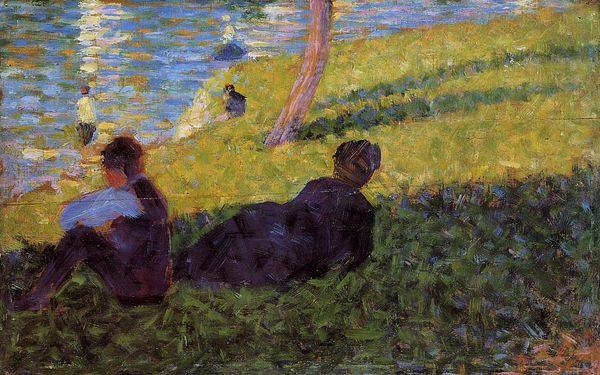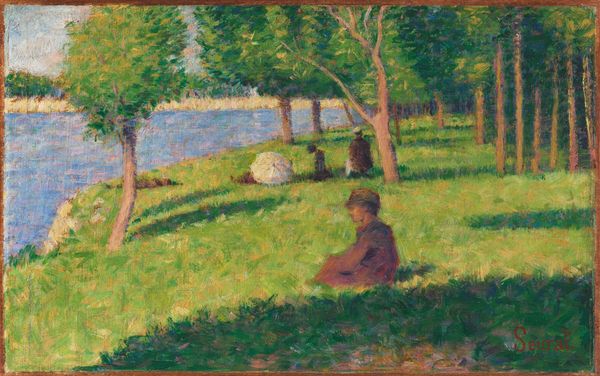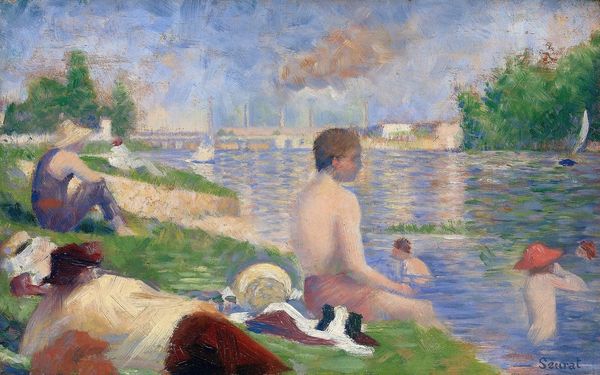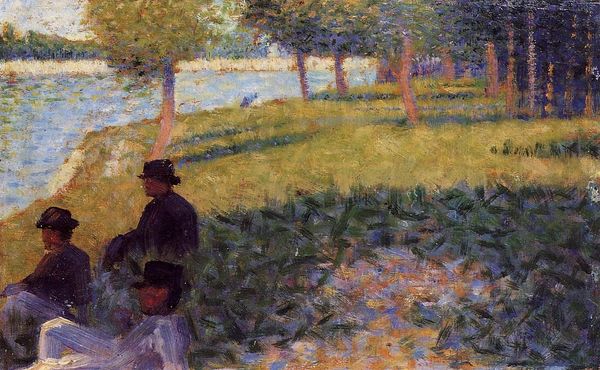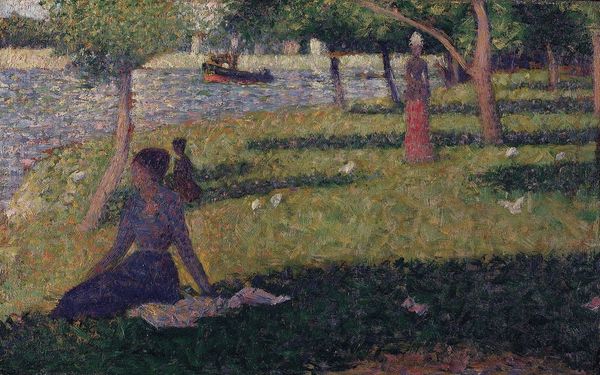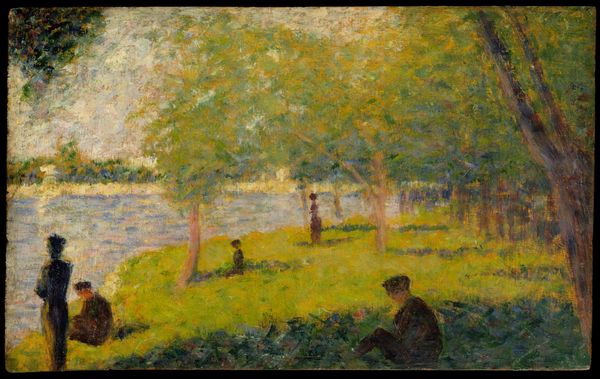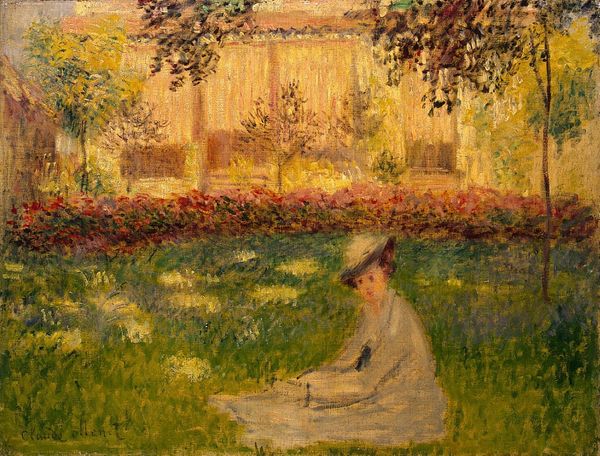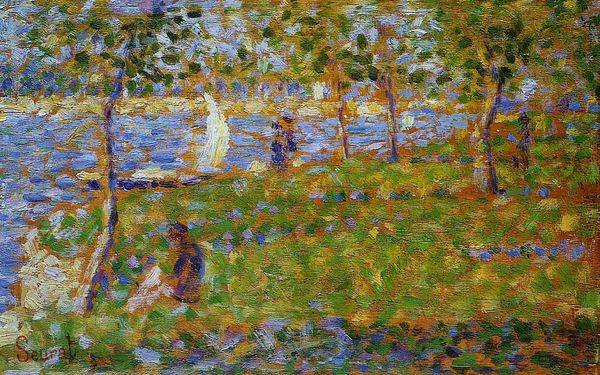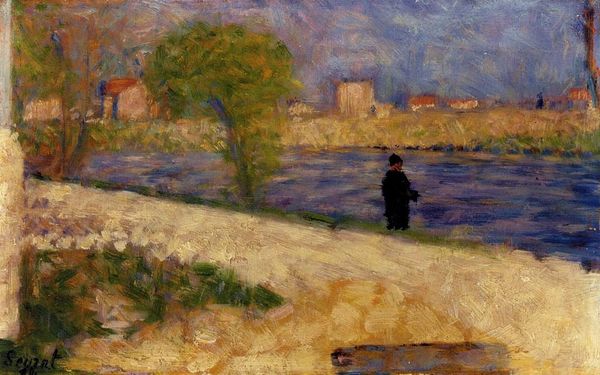
plein-air, oil-paint, impasto
#
plein-air
#
oil-paint
#
landscape
#
river
#
impressionist landscape
#
oil painting
#
impasto
#
cityscape
#
post-impressionism
Copyright: Public Domain: Artvee
Editor: This is Georges Seurat's "The Seine with Clothing on the Bank," painted between 1883 and 1884. It's an oil painting, a landscape filled with these almost tangible brushstrokes. I’m really drawn to how thick the paint is, especially in the area depicting clothing. What is your take on this painting, Professor? Curator: From a materialist perspective, the impasto technique is incredibly important. Seurat is not just depicting a scene, he’s actively constructing it through the materiality of paint. Think about the labor involved: grinding pigments, mixing oils, applying the paint in such a deliberate manner. The clothing on the bank becomes less about representing leisure and more about showcasing a process. Editor: So you are saying that this shows the active labor of the artist and shifts the perspective? How so? Curator: Exactly. Seurat highlights the constructed nature of the painting itself. Consider how this challenges traditional distinctions between high art and craft. The very means of production become the subject. It begs questions: Where did Seurat source his materials? Who were the laborers involved in pigment creation? What kind of commodity exchange enabled Seurat to acquire them and, subsequently, sell the painting? Editor: It makes you consider the economic realities behind the art! Looking at it that way gives it a totally new meaning. Curator: Precisely. The clothing, the river, the bank – they're not just scenic elements. They’re manifestations of a particular social and economic system, meticulously constructed using specific materials. So, what are your closing thoughts about the painting? Editor: Seeing the art world as driven by materiality gives me an avenue to critique and analyse how works like these reinforce power structures in our societies, thanks!
Comments
No comments
Be the first to comment and join the conversation on the ultimate creative platform.
